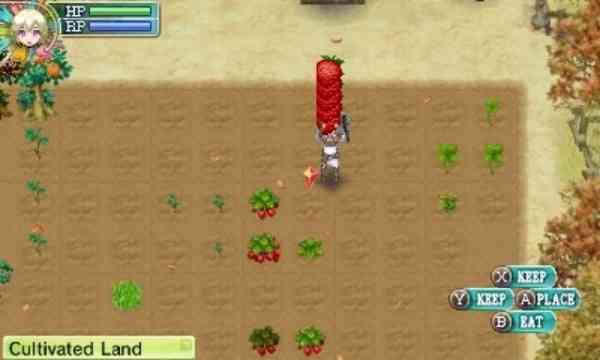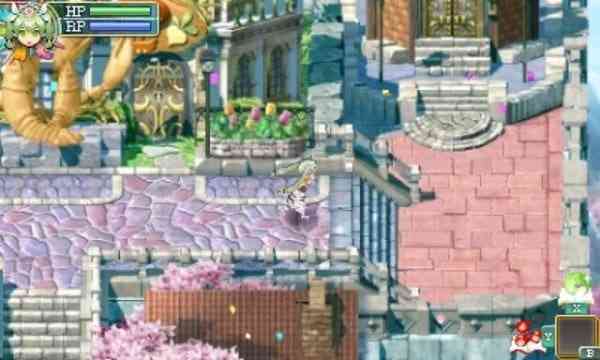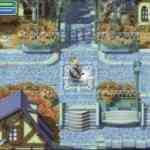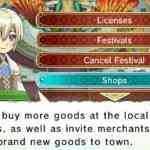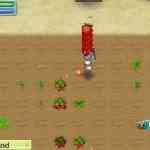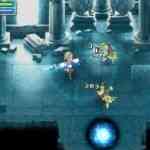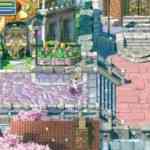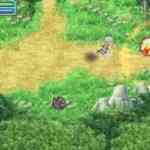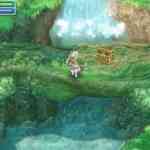Billions of people around the world have siblings. Brothers or sisters, either genetic or adopted; they come in every variety. And yet despite the vast differences in cultures or countries there is one constant that’s found in every single family: we love to torment each other! It’s fun. My brother is a long time Rune Factory fan, so naturally I waved my review copy under his nose with a roaring rendition of “Nana-nana-na-na”. The running I do each morning is starting to pay off.
For those who are uninitiated, Rune Factory is a clever amalgamation of two very different, but very well put together, types of games. Primarily, it’s a top-down perspective action RPG with sprawling amounts of weapons, armor, accessories, maic, items and all the other bells and whistles you’d expect to see. But, there’s a clever twist in the form of a farm! That’s absolutely right. Make sure you tend to your crops before you go out Orc slaying! The farming is hugely integrated into your income, and I daresay it’s required. There are other means of obtaining precious gold, but your crops will rake in the most.
Obviously, for a game like this to work, the farming and fighting have to go hand in hand, and in Rune Factory it does. Growing and selling crops will earn you money for superior gear and medicine, while completing quests and crushing wildlife will earn you a reputation with the town’s folk, allowing your quaint little village of Selphia to flourish. One of the more interesting mechanics in game is the “Prince Points” system. Doing deeds for the villagers will earn you points that have various and different uses, including expanding your farm to include stables, bigger shipping boxes, or increased inventory space. You can also use the points to book festivals or upgrade shops around town to include a bolstered stock of goods. Choose wisely, because you can only earn so many points per day. It’s kind of addicting too to be prepared to do more of this then you aniticipated.
Combat is relatively simple and is easily mastered. It utilizes a hotkey system that allows you to assign spells to either “X” or “Y”, in addition to using your standard attack button. This is incredibly valuable as navigating the inventory during combat is clunky, and quite frankly a bit of a chore. It appears however that this was taken into consideration by the developers, because the game automatically pauses the moment you bring up the menu screen, saving you from an unfortunate and grisly fate.
Like any good RPG, Rune Factory 4 rewards you for your deeds, and quite handsomely at that. There is an immediate sense of accomplishment as each individual task you are capable of performing, such as swordplay, harvesting, cooking, using magic, and even sleeping, has its own separate progression bar, and notifies you when you’ve made an improvement. That being said, Rune Factory 4’s biggest downfall comes in the form of its writing, which is simple, almost insultingly so at times. The story suffers from this most of all, which begins with what could almost be considered one of the deadly sins of gaming: Amnesia. Right from the get go your character gets a swift bonk to the head and can’t remember who he (or she) is anymore. I’ve seen this in games too many times now. It’s safe, it’s easy, and it’s a copout. A zero effort blank slate if you will.
The art matches the game to a tee. Absurdly oversized weapons and colorful characters really are the calling card of the Japanese RPG, and it oozes from the game in spades. A dragon with feathers? Check. An adorable sheep-rabbit? Check! A sword the size of your body? Check, check, check. The world itself is presented in the form of a series of colorfully painted 2D images, with everything else laid over top. It looks good…most of the time. I found that the 3D effect would pop further forward than the HUD, which was jarring and very hard to look at. As a result, I spent most of my time playing with the 3D off. The atmosphere wasn’t lost on me though, as the music did a good job of filling the void. I do admit though that the voices felt very stereotypical, which in this case wasn’t a bad thing, just predictable. The sound quality was incredible though! I’ll try not to gush, but I was impressed by what was probably some of the clearest voice acting that I have heard on the 3DS to date.
Rune Factory 4 is another solid entry in an already strongly established series, and it isn’t showing any sign of stopping. It’s got the charm and outward appeal, as well as simple but fulfilling gameplay to draw in new comers, but it’s also got the depth and versatility that keeps veterans coming back time and time again. What it lacks in the form of a gripping story, it makes up for with rewarding, fun, and simple gameplay that can be enjoyed by everyone.
